Fort Walton Beach, FL
428 Mary Esther Cut Off NW Unit A,
Fort Walton Beach, FL
32548, United States
(850) 374-3595
Learn how to identify non-comedogenic skincare products that won't clog your pores or cause breakouts. Discover ingredients to avoid and look for, read labels, and consult professionals. Say goodbye to pesky breakouts and hello to a radiant complexion!
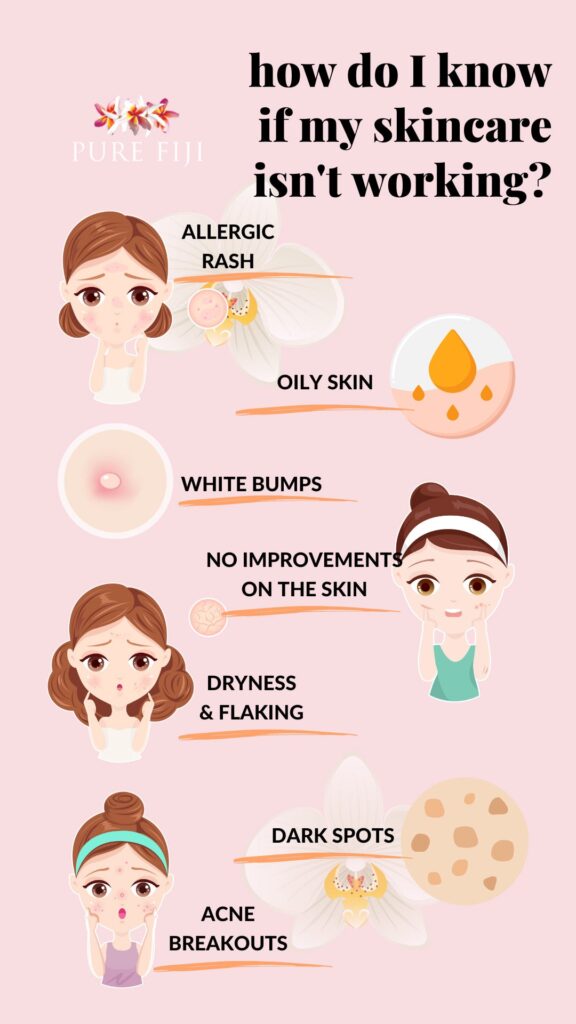
Curious about whether or not a skincare product is “non-comedogenic”? Look no further! We all want products that won’t clog our pores or cause breakouts, but deciphering the jargon on product labels can be confusing. Luckily, The Beauty Experts are here to help. Located in Mary Esther, FL, this beauty hub is owned and operated by Tilly Souriyseng, a certified Bella Lash Trainer who knows a thing or two about skincare. With her expertise and guidance, you can learn how to identify and select non-comedogenic products that will keep your skin happy and healthy. So, say farewell to pesky breakouts and hello to a radiant complexion!
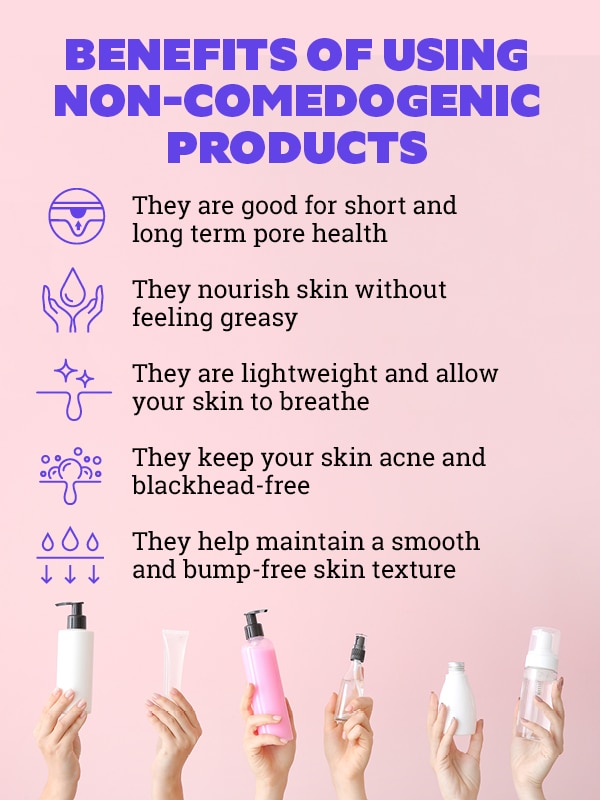
This image is property of static-bebeautiful-in.unileverservices.com.
Non-comedogenic is a term often seen on skincare product labels, but what does it actually mean? In simple terms, it refers to products that are specifically formulated to not clog pores or cause acne breakouts. Comedones are the small bumps that can appear on the skin when pores become blocked with excess oil, dead skin cells, and bacteria. Non-comedogenic products are designed to prevent this from happening, giving you peace of mind when using them on your skin.
When it comes to skincare products, not all ingredients are created equal. Some ingredients have a higher likelihood of clogging pores and causing breakouts, while others are less likely to do so. It’s important to know which ingredients to avoid and which ones to look for when choosing non-comedogenic skincare products.
There are several commonly used ingredients in skincare products that have a higher comedogenic rating, meaning they have a greater chance of clogging pores. These ingredients include certain oils like coconut oil, cocoa butter, and soybean oil, as well as lanolin, isopropyl myristate, and certain types of fragrance. For those prone to acne or with oily skin, it’s best to steer clear of products containing these ingredients.
On the other hand, there are numerous non-comedogenic ingredients that are beneficial for the skin and less likely to cause breakouts. These ingredients include hyaluronic acid, glycerin, aloe vera, shea butter, and certain oils like argan oil and jojoba oil. When scanning ingredient lists, keep an eye out for these non-comedogenic ingredients to ensure you’re choosing products that will be gentle on your skin.
To determine whether a skincare product is truly non-comedogenic, it’s crucial to read and understand the ingredient labels. Ingredients are listed in descending order of concentration, so if a potentially comedogenic ingredient is listed towards the beginning, it means there is a higher concentration of that ingredient in the product. Be sure to familiarize yourself with common comedogenic and non-comedogenic ingredients so that you can make informed choices about the products you use on your skin.
With the abundance of skincare products available in the market, it can be overwhelming to determine which ones are truly non-comedogenic. To make an informed decision, there are a few avenues of research you can explore.
First and foremost, look for products that explicitly state that they are non-comedogenic. This is often mentioned on the packaging or in the product description. While it’s not a foolproof guarantee, seeing this label can provide some level of assurance that the product was specifically formulated to be non-comedogenic.
Another helpful way to gauge the effectiveness of a skincare product is by reading customer reviews and ratings. Websites and online platforms dedicated to skincare reviews can provide valuable insights from real users who have tried the product. Look for feedback specifically related to whether the product caused any breakouts or clogged pores. If a large number of users report negative experiences in this regard, it may be best to look for an alternative product.
When in doubt, seek guidance from professionals in the skincare field. Dermatologists and estheticians can provide personalized recommendations based on your skin type and specific needs. They have a wealth of knowledge and experience, often backed by scientific research, that can help steer you in the right direction when it comes to choosing non-comedogenic products. They may even be able to recommend specific brands or products that have been proven effective for others with similar skin concerns.
Every individual’s skin reacts differently to skincare products, which is why it’s essential to test a new product before incorporating it into your routine.
To determine how your skin will react to a new product, perform a patch test. Apply a small amount of the product to a discreet area of your skin, such as behind your ear or on the inside of your wrist. Leave it on for 24 to 48 hours and observe for any negative reactions such as redness, itching, or breakouts. If no adverse effects occur, it’s likely safe to use the product on your entire face.
Once you’ve started using a new product on your face, it’s important to monitor your skin for any changes. Pay attention to any signs of irritation, increased oiliness, or the development of new blemishes. If you notice any negative changes, discontinue use of the product immediately and consult with a skincare professional.
It typically takes several weeks for the full effects of a skincare product to become apparent. Therefore, it’s recommended to give a new product at least four to six weeks of consistent use before making a judgment on its non-comedogenic properties. Be patient and give your skin time to adjust and react accordingly.
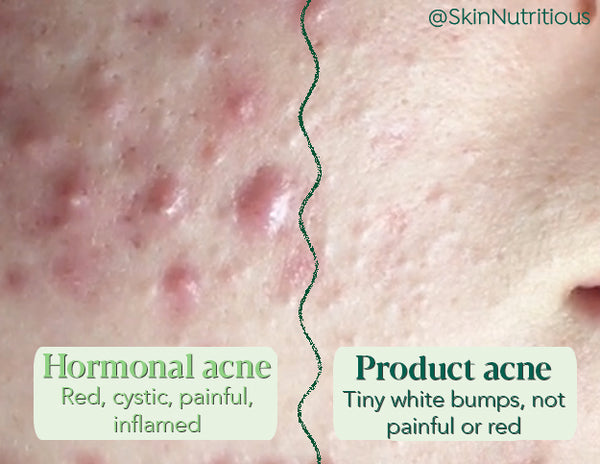
This image is property of cdn.shopify.com.
The internet provides a wealth of resources and tools that can assist in determining the non-comedogenic nature of skincare products.
The Beauty Experts website is an excellent place to start your research. This online platform offers comprehensive information about skincare products, their ingredients, and their non-comedogenic properties. It also provides tips and recommendations from skincare experts, helping you make more informed decisions about the products you choose to incorporate into your skincare routine.
There are numerous skincare product review websites that compile information on various products, including their comedogenic ratings. These websites often aggregate customer reviews and provide detailed analyses of ingredients, effectiveness, and overall customer satisfaction. Using these resources can provide valuable insights into whether a specific product is non-comedogenic and suitable for your needs.
In this digital age, there are even mobile applications available that allow you to scan product barcodes and analyze the included ingredients. These apps provide a breakdown of the ingredients, highlighting comedogenic or potentially harmful substances. Utilizing these apps can streamline the process of identifying non-comedogenic products while shopping.
While online resources are helpful, there’s no substitute for the expertise of skincare professionals.
Dermatologists are medical doctors who specialize in the treatment and care of skin. They can provide personalized recommendations based on your unique skin type, concerns, and medical history. Seeking the advice of a dermatologist is especially crucial if you have specific skin conditions, such as acne or eczema, that require specialized care. They can guide you towards non-comedogenic products that will address your skin concerns without causing further issues.
Estheticians are skincare professionals who focus on the aesthetic aspects of skincare. They are well-versed in various skincare products and formulations, including non-comedogenic options. Estheticians can provide facials and treatments using non-comedogenic products, as well as recommend suitable products for at-home use. Their expertise can be invaluable in finding the right products for your skin.
Apart from dermatologists and estheticians, there are many skincare experts and influencers who offer advice and recommendations online. These individuals have often undergone extensive training and have firsthand experience with different skincare products. Following their blogs or social media accounts can provide useful insights into the non-comedogenic nature of specific products and help guide your purchasing decisions.
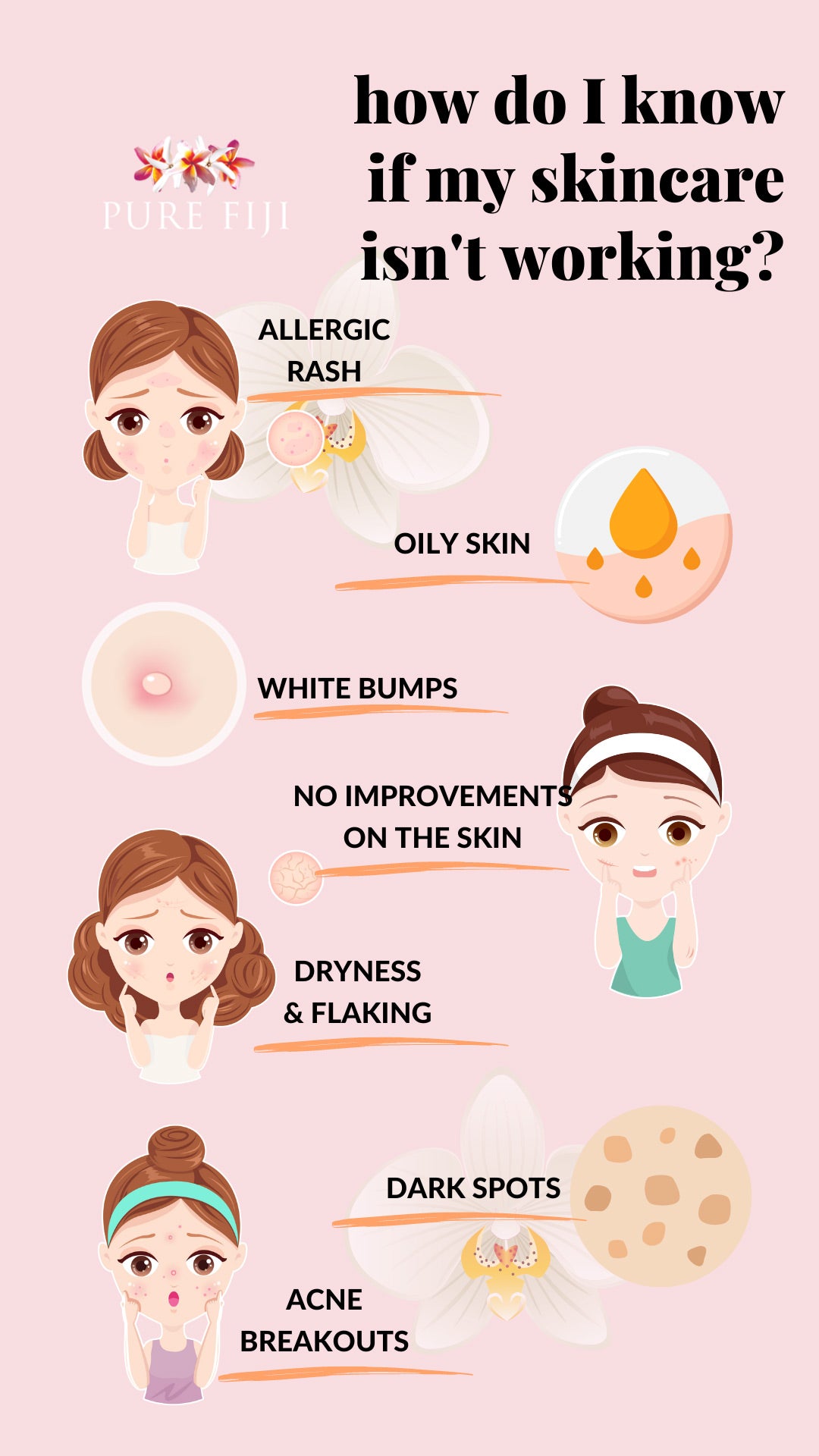
This image is property of cdn.shopify.com.
Each person’s skin is unique, and what works for one may not work for another. That’s why it’s important to consider your individual skin type when choosing non-comedogenic skincare products.
Before you can select suitable products, it’s essential to determine your skin type. Common skin types include oily, dry, combination, and sensitive. Understanding your skin’s specific characteristics and needs will guide you in choosing products that are specifically formulated for your skin type.
When choosing non-comedogenic products, it’s crucial to match them to your skin type. For example, if you have oily skin, look for non-comedogenic products that are oil-free and designed to control excess oil production. On the other hand, if you have dry skin, opt for non-comedogenic products that provide hydration and nourishment without clogging pores. Matching products to your skin type ensures optimal results while minimizing the risk of breakouts.
In addition to considering your skin type, it’s important to be aware of any sensitivities or allergies you may have. Some individuals may be more prone to reactions or irritation from certain ingredients, even if they are non-comedogenic. If you have a known sensitivity or allergy, carefully read ingredient labels and avoid any potential triggers. Consulting with a dermatologist or allergist can provide further guidance in navigating these considerations.
The reputation of the brand behind a skincare product can speak volumes about its quality and commitment to non-comedogenic formulations.
Before purchasing a product, take the time to research the brand’s values and ethics. Look for brands that prioritize transparency, sustainability, and the use of high-quality ingredients. Brands that align with your personal values are more likely to produce non-comedogenic products that are safe and effective for your skin.
Certain certifications and approvals can provide reassurance that a skincare product is non-comedogenic. Look for certifications from trusted organizations or third-party testing labs that evaluate the safety and effectiveness of products. These certifications can provide an added layer of confidence in the non-comedogenic claims made by the brand.
Customer satisfaction and loyalty speak volumes about a brand’s products. Look for reviews, testimonials, and feedback from other consumers who have used the brand’s skincare products. Positive reviews and loyal customer followings are indicators that the brand produces high-quality, non-comedogenic products that deliver on their promises.
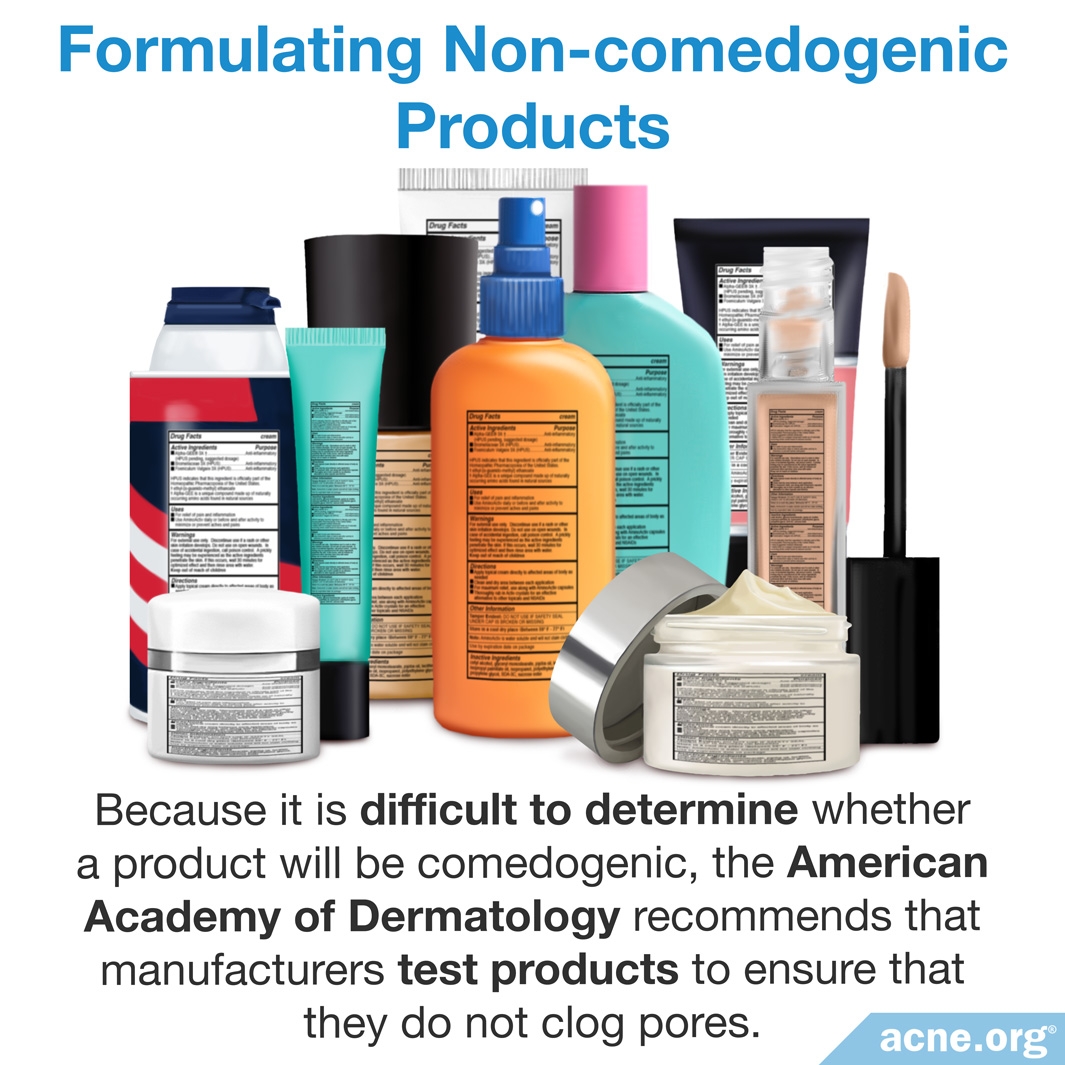
This image is property of www.acne.org.
Understanding the product formulation and manufacturing process can help ascertain whether a skincare product is non-comedogenic.
Skincare products undergo various manufacturing processes, and some methods may be more conducive to creating non-comedogenic formulations. Look for information on the brand’s website or packaging that describes their manufacturing process. Brands that prioritize gentle processes and avoid excessive heating or chemical reactions are more likely to produce non-comedogenic products.
Certain ingredients can irritate the skin or cause allergic reactions, even in non-comedogenic products. Familiarize yourself with potential irritants or harsh chemicals to avoid them in your skincare products. Common irritants include sulfates, parabens, and certain preservatives. Opting for non-comedogenic products that are free from these irritants can reduce the risk of adverse reactions on your skin.
Fragrances and dyes are often added to skincare products for aesthetic purposes, but they can be potential irritants and allergens. Non-comedogenic products that are fragrance-free and dye-free are generally a safer option for individuals with sensitive skin or those prone to breakouts. Look for products that explicitly state they are free from added fragrances and dyes.
In the skincare industry, regulatory standards and certifications can provide valuable guidance in determining non-comedogenic products.
The Food and Drug Administration (FDA) in the United States regulates cosmetic products, including skincare items. While the FDA does not specifically define ‘non-comedogenic,’ they require labels to be accurate and not mislead consumers. Look for FDA-approved products and familiarize yourself with their regulations and guidelines to ensure the products you choose meet safety standards.
Apart from FDA regulations, certain organizations and certifications maintain standards for non-comedogenic products. Look for certifications from established organizations such as the American Academy of Dermatology (AAD) or the Skin Cancer Foundation. These organizations conduct research and provide guidance on skincare products, including non-comedogenic formulations.
It’s important to be discerning when evaluating marketing claims made by skincare brands. While a product may claim to be non-comedogenic, it’s essential to look beyond the marketing language and investigate further. Research the brand, read ingredient labels, and consult trusted sources to ensure that the product’s non-comedogenic claims are supported by evidence.
By following these steps, you can make more informed decisions when choosing non-comedogenic skincare products. Remember that everyone’s skin is unique, so what works for one person may not work for another. Be patient and persistent in finding the right products for your skin, and don’t hesitate to seek professional guidance along the way. With the right approach, you can achieve healthier, clearer skin without worrying about clogged pores or breakouts.